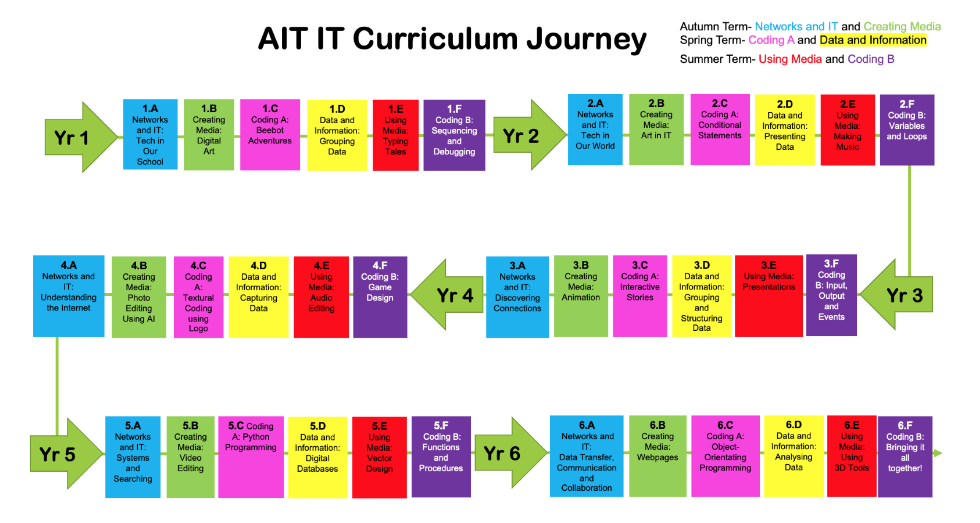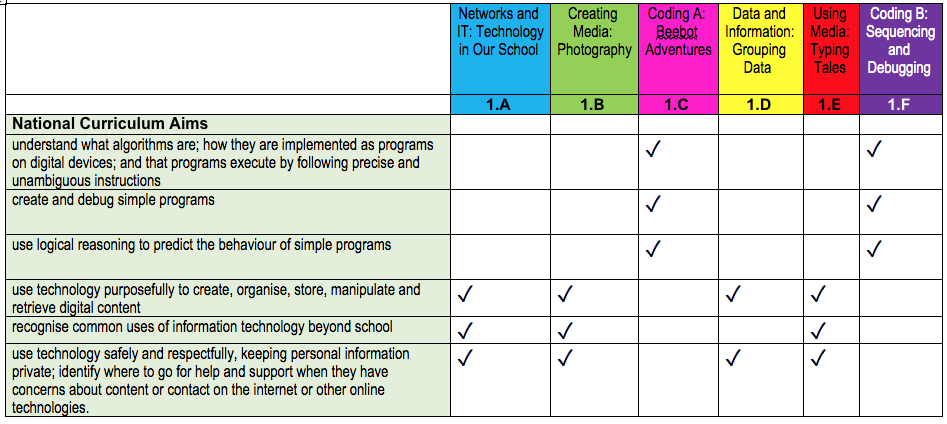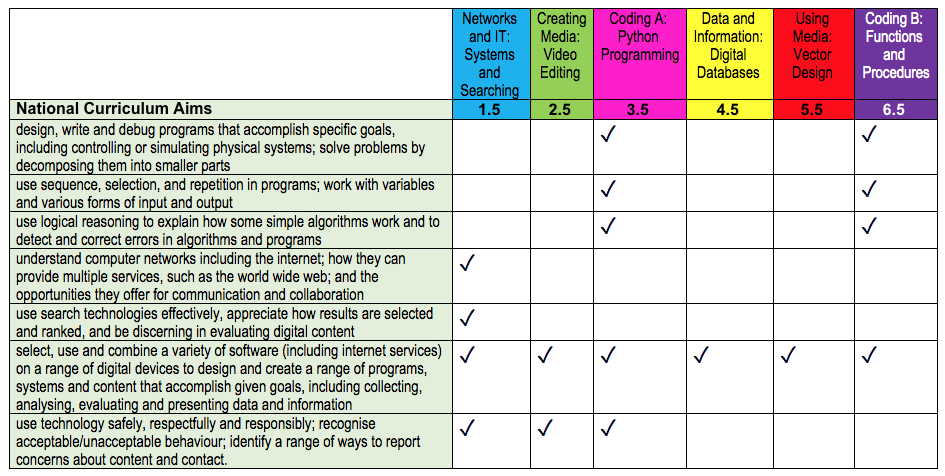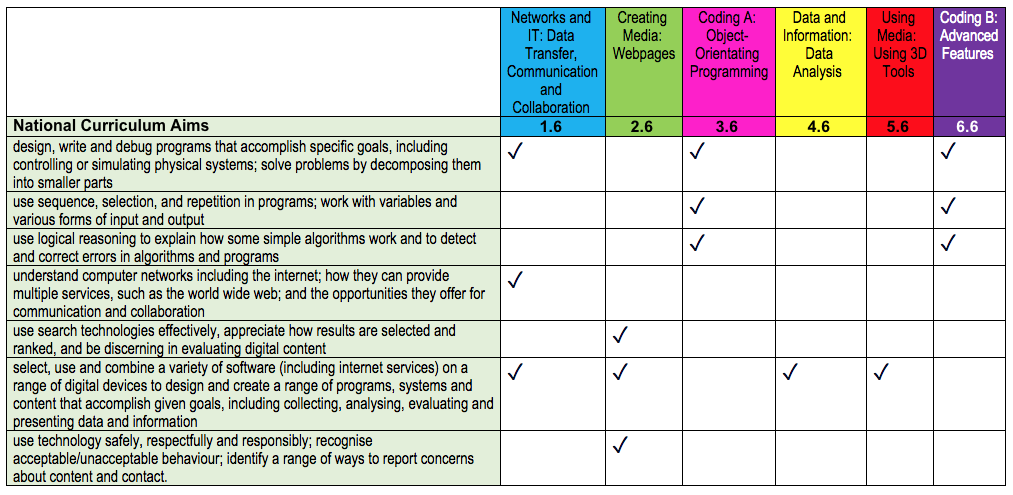Objectives:
Through our computing curriculum, we strive to support both teachers and students with engaging and impactful lessons while making the exciting opportunities within the field of technology accessible to all. This is achieved through:
– Comprehensive education in computer science, digital literacy, and information technology.
– Integration of cross-curricular elements to save teachers time and cover topics efficiently.
– Emphasis on career opportunities within the sector to increase student engagement in STEAM subjects.
Implementation:
To implement our computing curriculum, we have:
– Collaborated with teachers to develop lessons that support both educators and students.
– Structured lessons to be completed within one or two sessions per unit but still allowing for comprehensive coverage.
– Provided additional activities and ideas for teachers wanting to extend the learning.
– Created a child-friendly and accessible approach, utilising appropriate resources and practical examples.
– Enhanced student understanding and interest in the industry.
Impact:
The impact of our computing curriculum is seen in the development of students’ knowledge and skills in computer science, digital literacy, and information technology. This is achieved through:
– Compact lessons that cover all national curriculum topics, with the flexibility for further exploration.
– Increased student engagement and understanding of the subject matter.
– Highlighting career opportunities within the sector to inspire and motivate students.
– Encouraging further study or careers in the field of technology.
Curriculum Structure:
In our curriculum structure, we have organised each year group from 1-6 into six distinct units aimed at fostering a comprehensive understanding of technology and the computing curriculum. The six units are as follows and should be taught accordingly:
– Autumn Term- Networks and IT and Creating Media
– Spring Term- Coding A and Data and Information
– Summer Term- Using Media and Coding B
– This reoccurrence of themes each year ensures foundational knowledge is built while also consolidating skills, building on earlier concepts and preparing them for new learning.
Online Safety:
Whilst online safety is taught consistently throughout each session, specific individual lessons, based upon the Education for a Connected World Framework are also available. This discreet teaching ensures comprehensive coverage of the framework whilst also highlighting the specific importance of what is being taught. We believe that by having discrete online safety lessons, you can provide focused instruction on topics like digital identity, online relationships, online reputation, online bullying, and so on. These lessons can also be tailored to different age groups and include interactive activities, discussions, and scenarios that highlight the importance of safe and responsible online behaviour.
Inclusive to All:
We are proud to offer an accessible curriculum designed to be user-friendly and freely available for teachers. Our resources include multiple free options for different programs and are compatible with a range of devices, ensuring that all schools can access and utilise them easily. We believe in removing barriers to education and providing equal opportunities for all students.
Get involved
These educational resourses are continually being updated (and some units are not complete) and we work with a network of teachers to improve them. If your school would like to join our team of teachers in trialling these and future lesson plans please email Katie Anderson: education@archivesit.org.uk.

The tables below show how teaching the Archives of IT units meet the requirement of the National Curriculum





